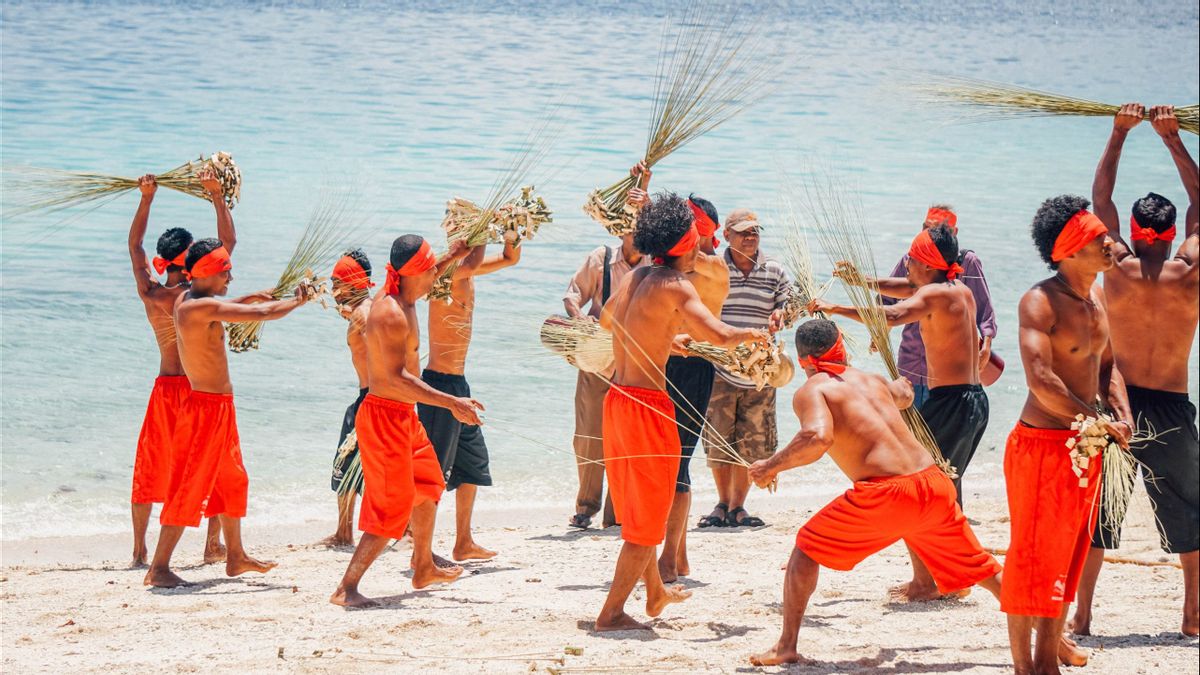YOGYAKARTA As a country with a majority Muslim population, Indonesians have a unique tradition of welcoming Eid. This tradition is passed down from generation to generation that has long existed to grandchildren.
It should be noted that the tradition of welcoming Eid in Indonesia is carried out in various regions in Indonesia. Each region has their own unique traditions. That is what adds to the diversity of cultures in Indonesia.
The tradition of welcoming Eid is usually held collectively by the community. The celebration times are varied, some are held at the end of the month of Ramadan, some are held for several days, and so on. Here are some unique traditions that exist in Indonesia during Eid.
Did you know that the people of North Maluku have a unique tradition during Lebaran, which is hitting a broom. This tradition is usually carried out by youths and women from Morela and Mamala villages, Maluku Regency. They will gather and then face each other using lidi which is taken from an enau tree and then will greet each other for 30 minutes.
This tradition is usually held for 7 days after Lebaran and has existed since the 17th century. Although considered dangerous, this tradition is considered capable of strengthening brotherhood with each other.
Ronjok Sayak is a tradition of Bengkulu people which is held during the month of Ramadan. This tradition is in the formulation of dry to towering coconut shells after which a burning procession will be held. People believe that the fire can be a link between humans and their ancestors. Ronjok Sayang is usually done on the night of takbiran or the night of Eid al-Fitr. In addition, usually the preparation and burning of coconut shells is held in front of residents' houses.
Riau residents also have a unique tradition during Lebaran, namely batobo. This tradition is in the form of singing residents who go home from overseas and return to their hometowns. The procession will include rebanese music. After that night, residents will hold recitation and al-Quran competitions.
Batobo di Riau digelar untuk menyambut keluarga yang mudik dari overseasan. Tradisi ini telah dilakukan oleh warga Kampar selama ratusan tahun.
Although there are not many Muslims in Bali, they have a unique tradition during Lebaran which is called 'jotting'. Residents will cook Balinese home dishes which are then distributed to neighbors indiscriminately. This tradition is a form of religious tolerance as well as illustrates the humanism of the people in Bali.
This tradition is often known as the night of installing lights. Residents will turn on the lanterns or small oil lights that make the night atmosphere brighter than usual. This tradition was held 3 days before Eid al-Fitr. The number of lanterns or oil lights will be adjusted to the number of family members. The purpose of the tumbilotohe tradition is to welcome Lailatu Qadar. This tradition has existed since the 15th century and is still being carried out today.
The tradition of topat war in Lombok is usually held on the sixth day after Lebaran and is carried out by men. This tradition was held in the form of ketupat war. Residents will parade the produce after that they will throw each other up. This tradition is carried out as a form of gratitude and a prayer that will soon be answered.
Those are some unique traditions to welcome Eid. Visit VOI.ID for other interesting information.
The English, Chinese, Japanese, Arabic, and French versions are automatically generated by the AI. So there may still be inaccuracies in translating, please always see Indonesian as our main language. (system supported by DigitalSiber.id)













